 Technology peripherals
Technology peripherals
 AI
AI
 The first ultra-large-scale GAN model! The generation speed is 20+ times faster than Diffusion, and the image is produced in 0.13 seconds. It supports up to 16 million pixels.
The first ultra-large-scale GAN model! The generation speed is 20+ times faster than Diffusion, and the image is produced in 0.13 seconds. It supports up to 16 million pixels.
The first ultra-large-scale GAN model! The generation speed is 20+ times faster than Diffusion, and the image is produced in 0.13 seconds. It supports up to 16 million pixels.
With the release of DALL-E 2 by OpenAI, autoregressive and diffusion models have become the new standard for large-scale generative models overnight. Before that, Generative Adversarial Networks (GAN) had always been the mainstream choice and derived from StyleGAN. and other technologies.
Behind the explosion of AIGC, from a technical perspective, the architecture of the image generation model has undergone tremendous changes.
With the release of DALL-E 2 by OpenAI, autoregressive and diffusion models have become the new standard for large-scale generative models overnight. Before that, generative adversarial networks (GAN) had been They are all mainstream choices and have derived technologies such as StyleGAN.
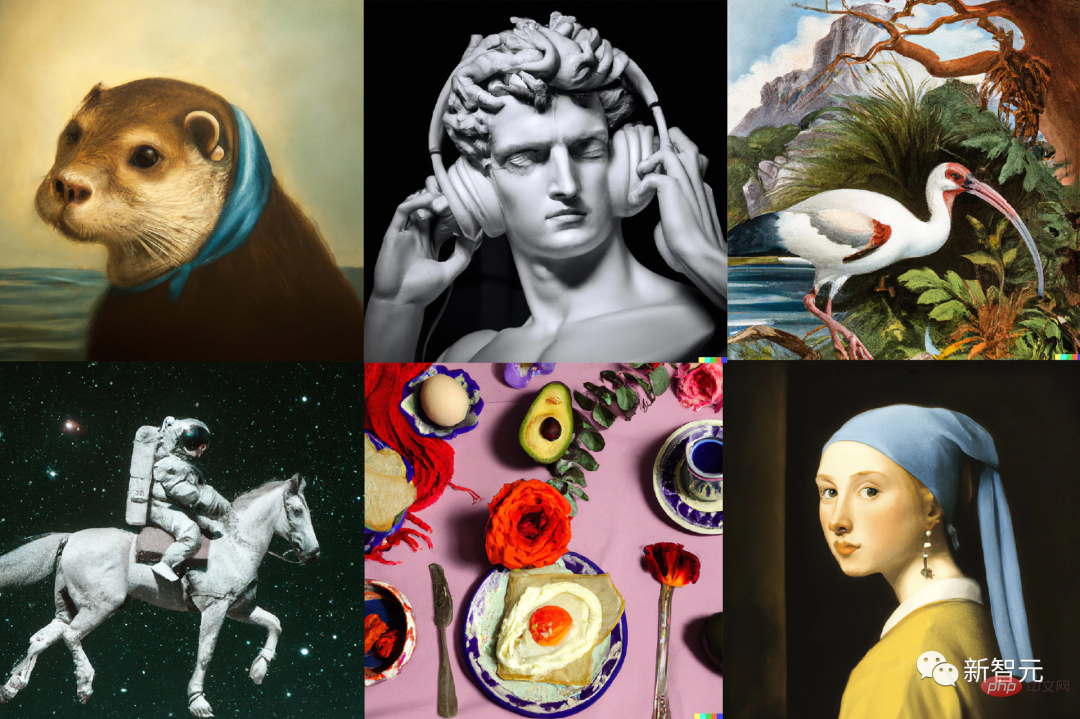
The architectural shift from GAN to diffusion model also raises the question: Can the scale of GAN model be scaled up? , for example, can we further improve performance in large data sets like LAION?
Recently, researchers from Pohang University of Science and Technology (South Korea), Carnegie Mellon University, and Adobe Research proposed that increasing the capacity of the StyleGAN architecture will lead to instability. A new generative adversarial network architecture, GigaGAN, breaks the size limit of the model and shows that GAN can still be competent as a text-to-image synthesis model.

Paper link: https://arxiv.org/abs/2303.05511
Project link: https://mingukkang. github.io/GigaGAN/
GigaGAN has three major advantages.
1. It is faster during inference. Compared with Stable Diffusion-v1.5 with the same level of parameters, the generation speed at 512 resolution is shortened from 2.9 seconds to 0.13 seconds. .
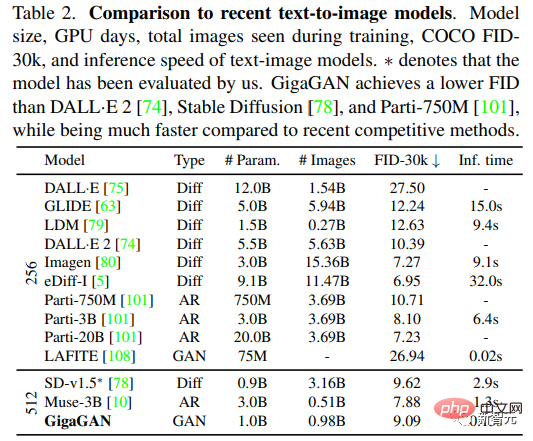
2. High-resolution images can be synthesized, for example, a 16-megapixel image can be synthesized in 3.66 seconds.

3. Supports various latent space editing applications, such as latent interpolation, style mixing and vector arithmetic operations.
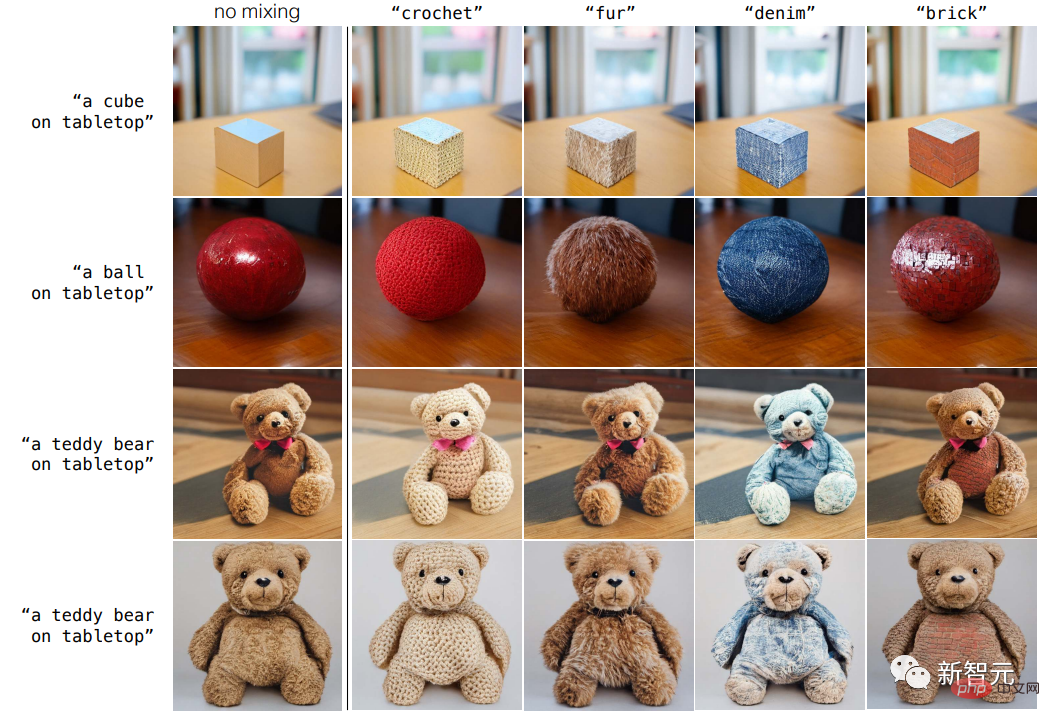
The recently released series of models, such as DALL-E 2, Imagen, Parti and Stable Diffusion, have ushered in a new era of image generation, reaching unprecedented levels of image quality and model flexibility.
The currently dominant paradigms "diffusion model" and "autoregressive model" both rely on the double-edged sword of iterative reasoning, because iterative methods can perform stable training with simple goals, but in reasoning Higher computational costs will be incurred in the process.
In contrast, the Generative Adversarial Network (GAN) only requires one forward pass to generate an image, so it is inherently more efficient.
Although GAN models dominated the "previous era" of generative modeling, due to instability in the training process, extending GAN requires careful adjustment of network structure and training considerations. , so although GANs are excellent at modeling single or multiple object categories, scaling to complex datasets (let alone open-world object generation) is still challenging.
So currently very large models, data and computing resources are mainly focused on diffusion and autoregressive models.
In this work, researchers mainly address the following questions:
Can GAN continue to scale and potentially benefit from these resources? Or is GAN already reaching its limit? What hinders further expansion of GANs? Can these obstacles be overcome?
The researchers first conducted experiments with StyleGAN2 and observed that simply expanding the backbone network would lead to unstable training. After identifying several key issues Finally, techniques for stabilizing training while increasing model capacity are proposed.
First, effectively expand the capacity of the generator by retaining a bank of filters and taking a linear combination of specific samples.
Adapted several techniques commonly used in the context of diffusion models and confirmed that they can bring similar performance improvements to GANs, such as incorporating self-attention mechanisms (images only) and Cross-attention (image-text) intertwined with convolutional layers improves performance.
In addition, the researchers reintroduced multi-scale training and found a new scheme that can improve image-text alignment and generate low-frequency details in the output.
Multi-scale training allows GAN-based generators to use parameters in low-resolution blocks more efficiently, resulting in better image-text alignment and image quality.
Builder
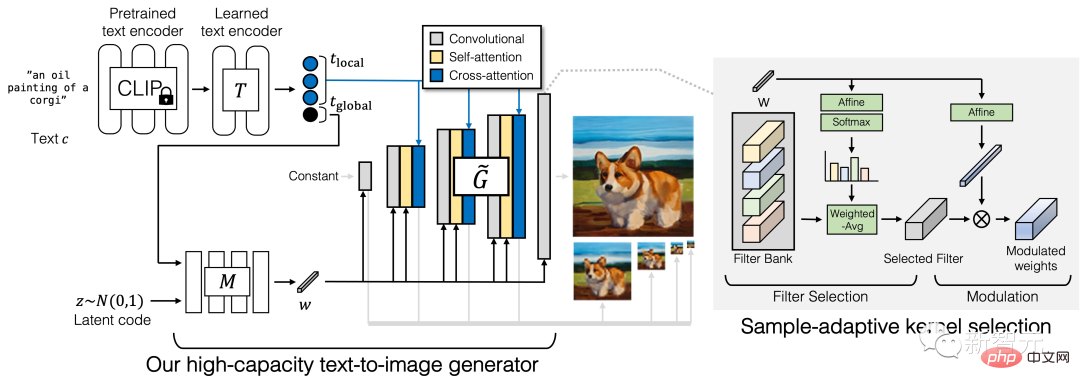
The generator of GigaGAN consists of a text encoding branch, a style mapping network, and a multi-scale synthesis network. network), supplemented by stable attention and adaptive kernel selection.
In the text encoding branch, a pre-trained CLIP model and a learned attention layer T are first used to extract text embeddings, and then the embedding process is passed to the style mapping network M, Generate style vectors similar to StyleGAN w




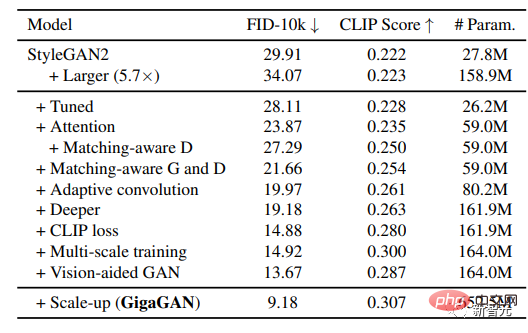
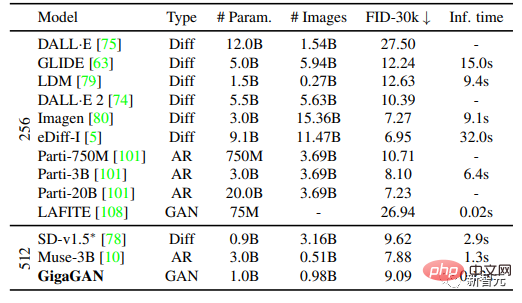

##4. Verified the advantages of GigaGAN's upsampler over other upsamplers in conditional and unconditional super-resolution tasks;

5. The results show that large-scale GANs still enjoy the continuous and decomposed latent space operations of GANs, enabling new image editing modes.

After adjusting parameters, researchers achieved stability and reliability on large-scale data sets such as LAION2B-en. Training of extended billion-parameter GAN (GigaGAN).
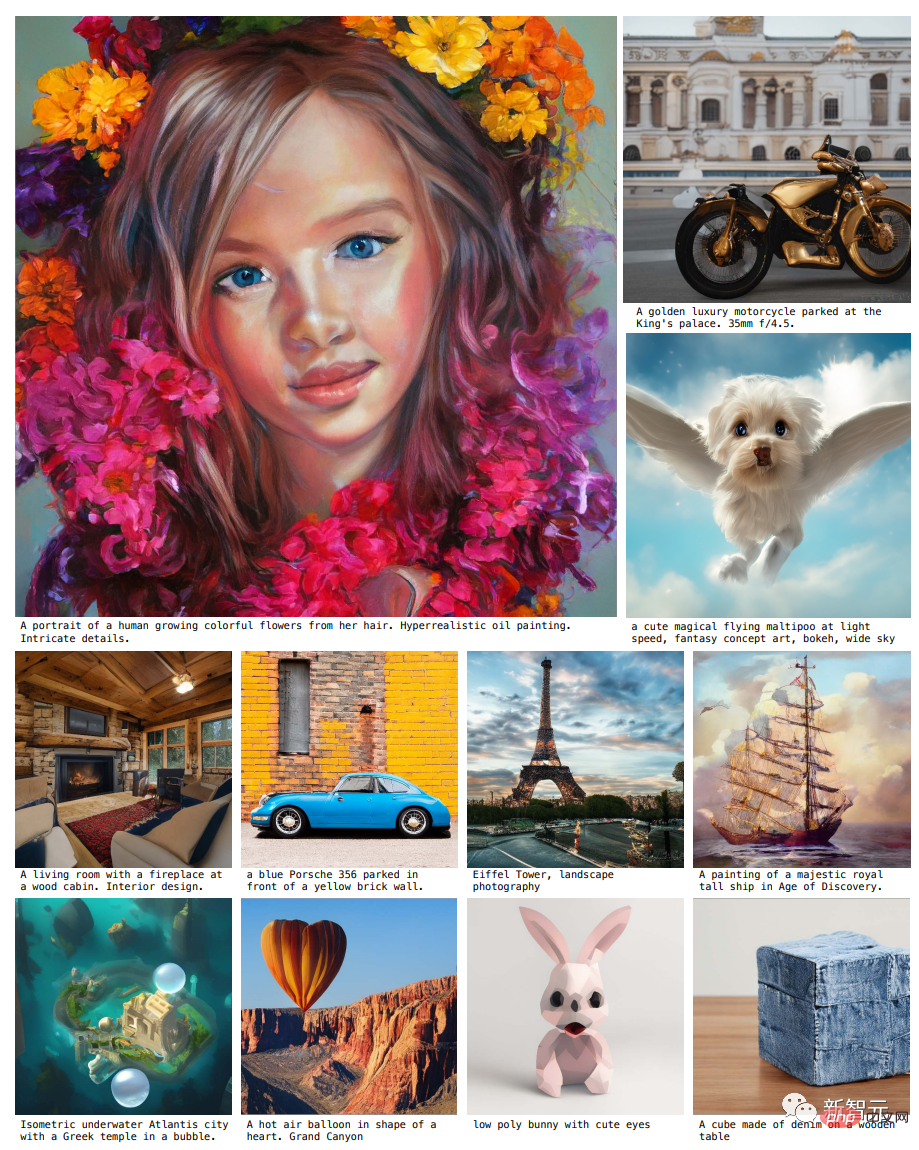
And this method adopts a multi-stage approach, first generating at 64×64, and then upsampling to 512 ×512, both networks are modular and powerful enough to be used in a plug-and-play manner.
The results show that although the images of the diffusion model are never seen during training, the GAN upsampling network based on text conditions can be used as an efficient and high-quality upsampler for the basic diffusion model (such as DALL-E 2).
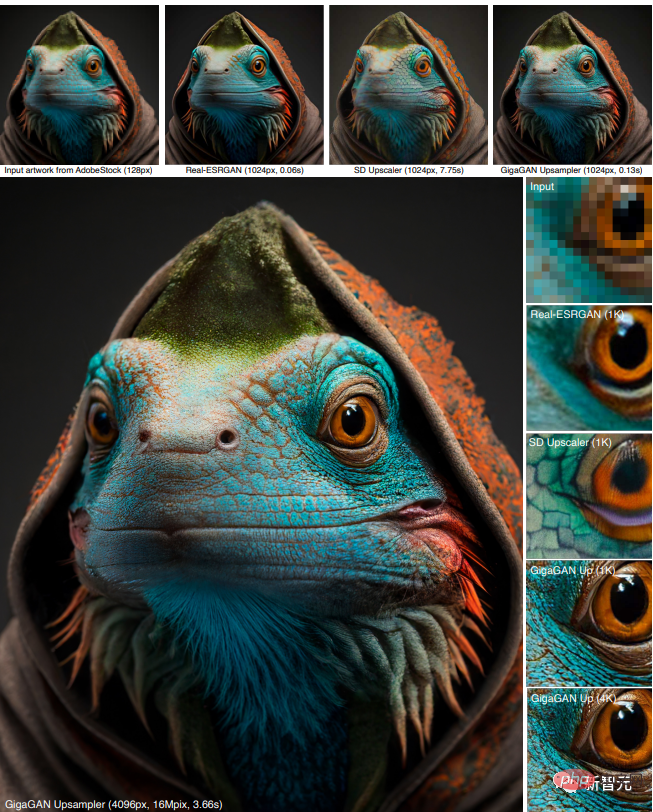
These results combined make GigaGAN far beyond previous GAN models, 36 times larger than StyleGAN2. 6 times larger than StyleGAN-XL and XMC-GAN.
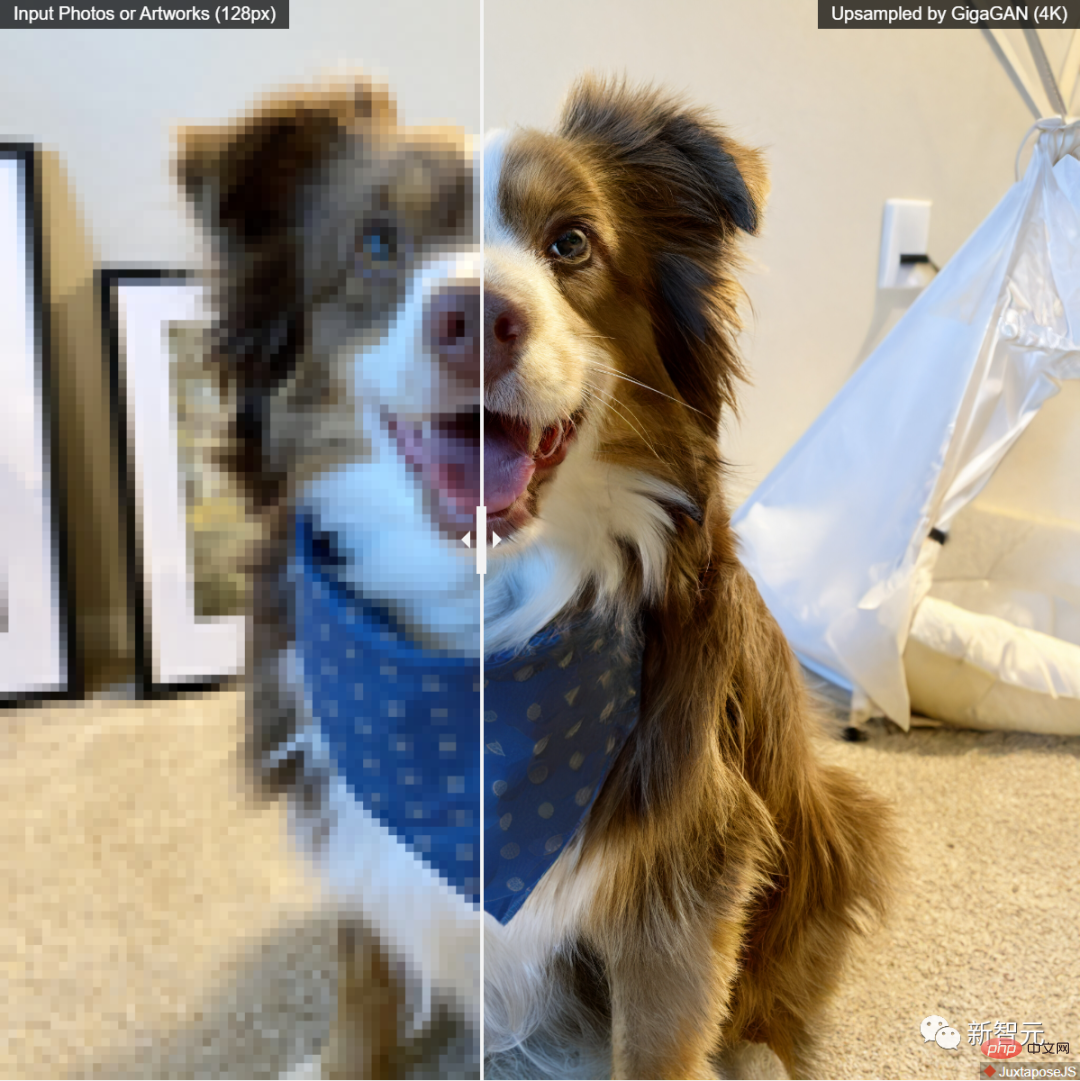
Although GiGAN’s 1 billion parameters are still lower than the largest synthetic models released recently, such as Imagen (3B), DALL-E 2 (5.5B) and Parti (20B), but no mass saturation with respect to model size has yet been observed.
GigaGAN achieved a zero-shot FID of 9.09 on the COCO2014 data set, which is lower than the FID of DALL-E 2, Parti-750M and Stable Diffusion
Prompt interpolation
GigaGAN can smoothly interpolate between prompts. The four corners in the figure below are formed by the same Latent code generation, but with different text prompts.
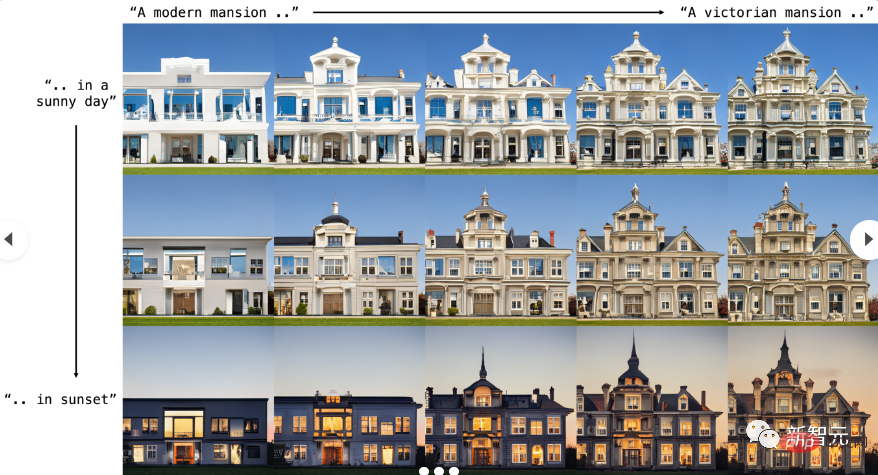
Disentangled prompt mixing
GigaGAN Reserved A separated latent space enables combining the coarse style of one sample with the fine style of another sample, and GigaGAN can directly control the style through text hints.
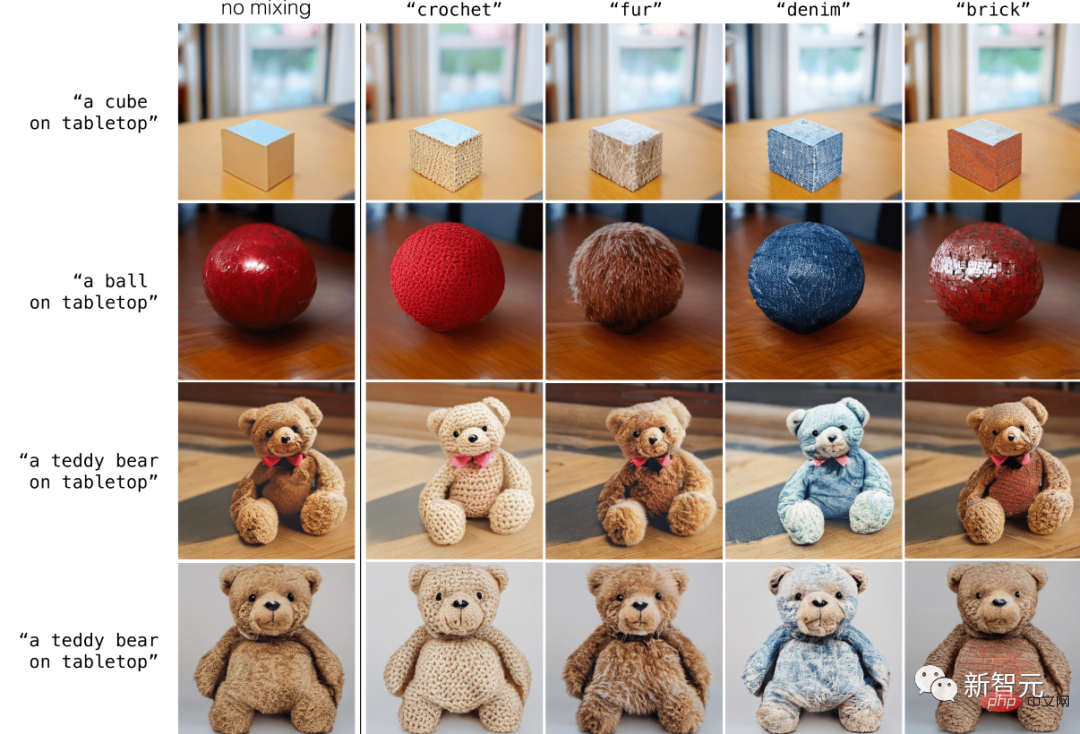
The GAN-based model architecture preserves a separate latent space, enabling the coarse style of one sample to be mixed with the fine style of another sample.

The above is the detailed content of The first ultra-large-scale GAN model! The generation speed is 20+ times faster than Diffusion, and the image is produced in 0.13 seconds. It supports up to 16 million pixels.. For more information, please follow other related articles on the PHP Chinese website!

Hot AI Tools

Undresser.AI Undress
AI-powered app for creating realistic nude photos

AI Clothes Remover
Online AI tool for removing clothes from photos.

Undress AI Tool
Undress images for free

Clothoff.io
AI clothes remover

Video Face Swap
Swap faces in any video effortlessly with our completely free AI face swap tool!

Hot Article

Hot Tools

Notepad++7.3.1
Easy-to-use and free code editor

SublimeText3 Chinese version
Chinese version, very easy to use

Zend Studio 13.0.1
Powerful PHP integrated development environment

Dreamweaver CS6
Visual web development tools

SublimeText3 Mac version
God-level code editing software (SublimeText3)

Hot Topics
 1391
1391
 52
52
 The world's most powerful open source MoE model is here, with Chinese capabilities comparable to GPT-4, and the price is only nearly one percent of GPT-4-Turbo
May 07, 2024 pm 04:13 PM
The world's most powerful open source MoE model is here, with Chinese capabilities comparable to GPT-4, and the price is only nearly one percent of GPT-4-Turbo
May 07, 2024 pm 04:13 PM
Imagine an artificial intelligence model that not only has the ability to surpass traditional computing, but also achieves more efficient performance at a lower cost. This is not science fiction, DeepSeek-V2[1], the world’s most powerful open source MoE model is here. DeepSeek-V2 is a powerful mixture of experts (MoE) language model with the characteristics of economical training and efficient inference. It consists of 236B parameters, 21B of which are used to activate each marker. Compared with DeepSeek67B, DeepSeek-V2 has stronger performance, while saving 42.5% of training costs, reducing KV cache by 93.3%, and increasing the maximum generation throughput to 5.76 times. DeepSeek is a company exploring general artificial intelligence
 AI subverts mathematical research! Fields Medal winner and Chinese-American mathematician led 11 top-ranked papers | Liked by Terence Tao
Apr 09, 2024 am 11:52 AM
AI subverts mathematical research! Fields Medal winner and Chinese-American mathematician led 11 top-ranked papers | Liked by Terence Tao
Apr 09, 2024 am 11:52 AM
AI is indeed changing mathematics. Recently, Tao Zhexuan, who has been paying close attention to this issue, forwarded the latest issue of "Bulletin of the American Mathematical Society" (Bulletin of the American Mathematical Society). Focusing on the topic "Will machines change mathematics?", many mathematicians expressed their opinions. The whole process was full of sparks, hardcore and exciting. The author has a strong lineup, including Fields Medal winner Akshay Venkatesh, Chinese mathematician Zheng Lejun, NYU computer scientist Ernest Davis and many other well-known scholars in the industry. The world of AI has changed dramatically. You know, many of these articles were submitted a year ago.
 Google is ecstatic: JAX performance surpasses Pytorch and TensorFlow! It may become the fastest choice for GPU inference training
Apr 01, 2024 pm 07:46 PM
Google is ecstatic: JAX performance surpasses Pytorch and TensorFlow! It may become the fastest choice for GPU inference training
Apr 01, 2024 pm 07:46 PM
The performance of JAX, promoted by Google, has surpassed that of Pytorch and TensorFlow in recent benchmark tests, ranking first in 7 indicators. And the test was not done on the TPU with the best JAX performance. Although among developers, Pytorch is still more popular than Tensorflow. But in the future, perhaps more large models will be trained and run based on the JAX platform. Models Recently, the Keras team benchmarked three backends (TensorFlow, JAX, PyTorch) with the native PyTorch implementation and Keras2 with TensorFlow. First, they select a set of mainstream
 Hello, electric Atlas! Boston Dynamics robot comes back to life, 180-degree weird moves scare Musk
Apr 18, 2024 pm 07:58 PM
Hello, electric Atlas! Boston Dynamics robot comes back to life, 180-degree weird moves scare Musk
Apr 18, 2024 pm 07:58 PM
Boston Dynamics Atlas officially enters the era of electric robots! Yesterday, the hydraulic Atlas just "tearfully" withdrew from the stage of history. Today, Boston Dynamics announced that the electric Atlas is on the job. It seems that in the field of commercial humanoid robots, Boston Dynamics is determined to compete with Tesla. After the new video was released, it had already been viewed by more than one million people in just ten hours. The old people leave and new roles appear. This is a historical necessity. There is no doubt that this year is the explosive year of humanoid robots. Netizens commented: The advancement of robots has made this year's opening ceremony look like a human, and the degree of freedom is far greater than that of humans. But is this really not a horror movie? At the beginning of the video, Atlas is lying calmly on the ground, seemingly on his back. What follows is jaw-dropping
 KAN, which replaces MLP, has been extended to convolution by open source projects
Jun 01, 2024 pm 10:03 PM
KAN, which replaces MLP, has been extended to convolution by open source projects
Jun 01, 2024 pm 10:03 PM
Earlier this month, researchers from MIT and other institutions proposed a very promising alternative to MLP - KAN. KAN outperforms MLP in terms of accuracy and interpretability. And it can outperform MLP running with a larger number of parameters with a very small number of parameters. For example, the authors stated that they used KAN to reproduce DeepMind's results with a smaller network and a higher degree of automation. Specifically, DeepMind's MLP has about 300,000 parameters, while KAN only has about 200 parameters. KAN has a strong mathematical foundation like MLP. MLP is based on the universal approximation theorem, while KAN is based on the Kolmogorov-Arnold representation theorem. As shown in the figure below, KAN has
 What's going on when the network can't connect to the wifi?
Apr 03, 2024 pm 12:11 PM
What's going on when the network can't connect to the wifi?
Apr 03, 2024 pm 12:11 PM
1. Check the wifi password: Make sure the wifi password you entered is correct and pay attention to case sensitivity. 2. Confirm whether the wifi is working properly: Check whether the wifi router is running normally. You can connect other devices to the same router to determine whether the problem lies with the device. 3. Restart the device and router: Sometimes, there is a malfunction or network problem with the device or router, and restarting the device and router may solve the problem. 4. Check the device settings: Make sure the wireless function of the device is turned on and the wifi function is not disabled.
 FisheyeDetNet: the first target detection algorithm based on fisheye camera
Apr 26, 2024 am 11:37 AM
FisheyeDetNet: the first target detection algorithm based on fisheye camera
Apr 26, 2024 am 11:37 AM
Target detection is a relatively mature problem in autonomous driving systems, among which pedestrian detection is one of the earliest algorithms to be deployed. Very comprehensive research has been carried out in most papers. However, distance perception using fisheye cameras for surround view is relatively less studied. Due to large radial distortion, standard bounding box representation is difficult to implement in fisheye cameras. To alleviate the above description, we explore extended bounding box, ellipse, and general polygon designs into polar/angular representations and define an instance segmentation mIOU metric to analyze these representations. The proposed model fisheyeDetNet with polygonal shape outperforms other models and simultaneously achieves 49.5% mAP on the Valeo fisheye camera dataset for autonomous driving
 Tesla robots work in factories, Musk: The degree of freedom of hands will reach 22 this year!
May 06, 2024 pm 04:13 PM
Tesla robots work in factories, Musk: The degree of freedom of hands will reach 22 this year!
May 06, 2024 pm 04:13 PM
The latest video of Tesla's robot Optimus is released, and it can already work in the factory. At normal speed, it sorts batteries (Tesla's 4680 batteries) like this: The official also released what it looks like at 20x speed - on a small "workstation", picking and picking and picking: This time it is released One of the highlights of the video is that Optimus completes this work in the factory, completely autonomously, without human intervention throughout the process. And from the perspective of Optimus, it can also pick up and place the crooked battery, focusing on automatic error correction: Regarding Optimus's hand, NVIDIA scientist Jim Fan gave a high evaluation: Optimus's hand is the world's five-fingered robot. One of the most dexterous. Its hands are not only tactile



